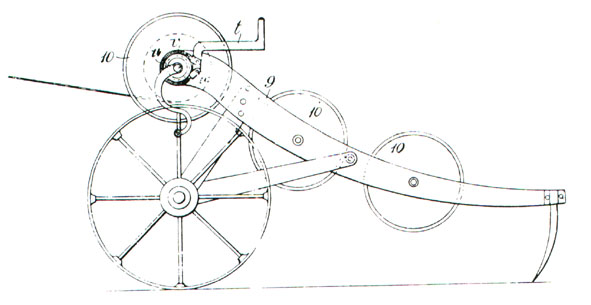As soon as the kites
were released they would be blown, by the wind up the kite cable.
The cable has a series of stops running up it. These stops were cone
like in shape and they progressively became larger as they reached the top
of the cable. The size of the cones corresponded to the size of the towing
rings on the kites.
As the first lifter kite travelled up the cable, its larger towing
ring would pass over the smaller cones until it reached its intended
mooring point. At this point the cone was larger in diameter than
the towing ring. The kite's travel would stop at this cone.
The next kite with a smaller towing ring would travel up the cable, passing
over the smaller towing rings until it reached its mooring point. This
continued until eventually the carrier kite which was attached
to a trolley travelled up the cable. The trolley contained wheels
which ran against the top of the cable.
Suspended from the trolley was the passenger carrying basket-car.
The basket-car and its passenger were carried up the cable until they
reached the lowest lifting kite where it would stop.
The passenger inside the car was able to control the rate of ascent and
descent by operating a complex system of lines and brakes. The adjustment
of these lines also allowed the basket to be aligned with the horizon,
keeping the car and passenger in a horizontal position.
The image below on the left shows a patented drawing of Cody's field
winch. The winch had interchangeable drums and was intended to be used
to hold and release the kite cable.
The image below on the left shows Cody operating the winding gear at
the Aeronautic's Society's 1903 kite competition held at Worthing. The
image is courtesy of the Royal Aeronautical Society.


